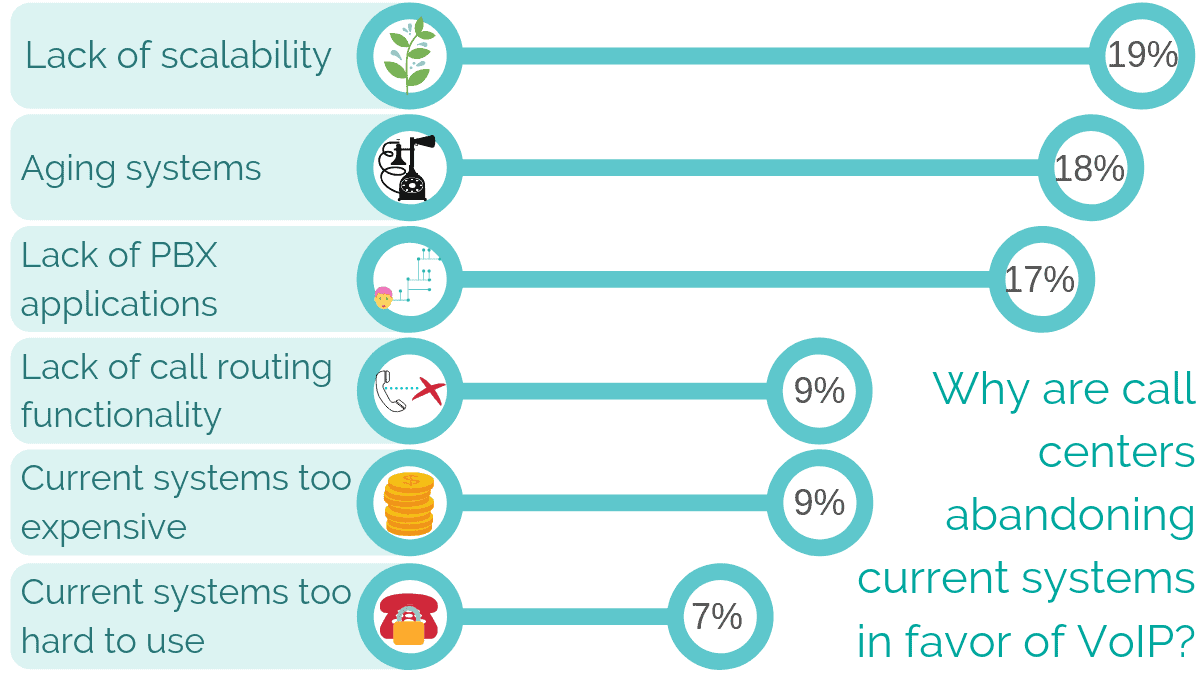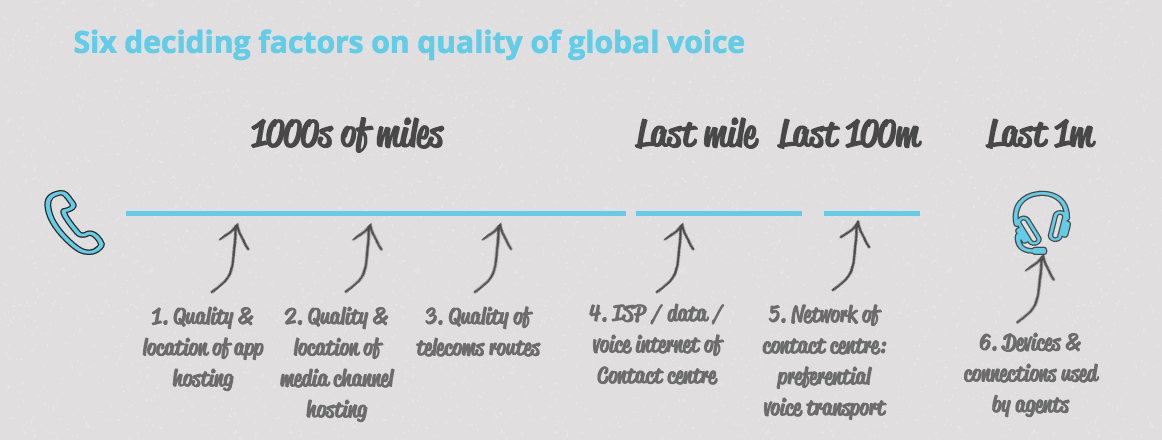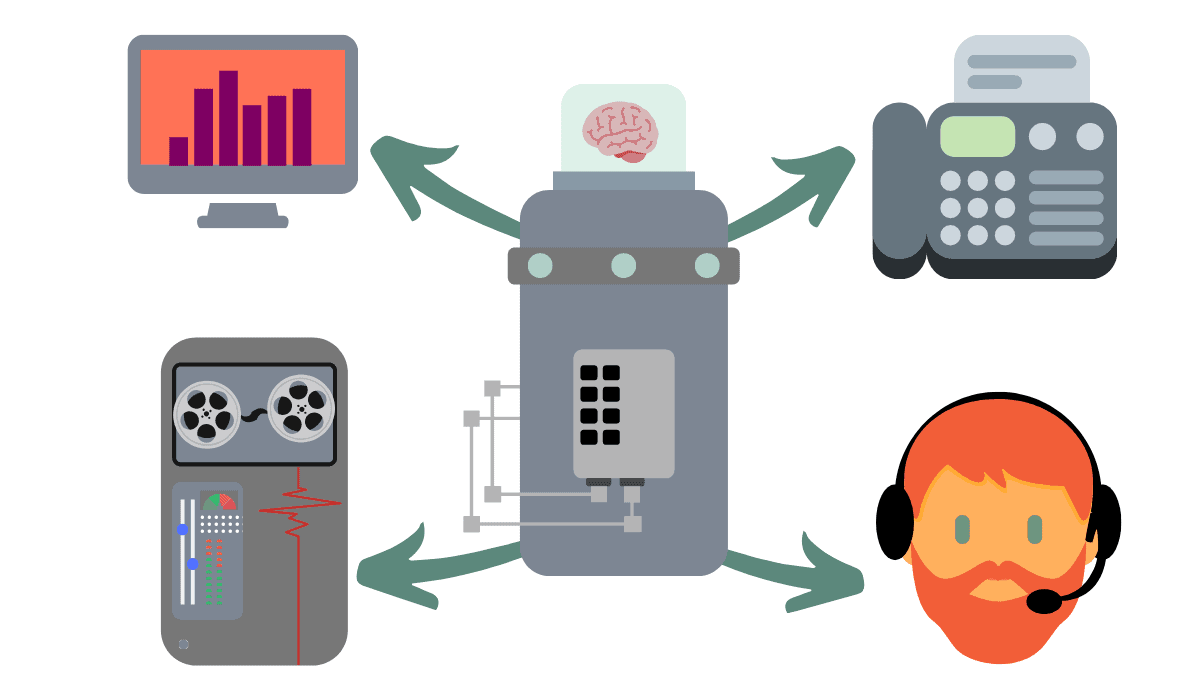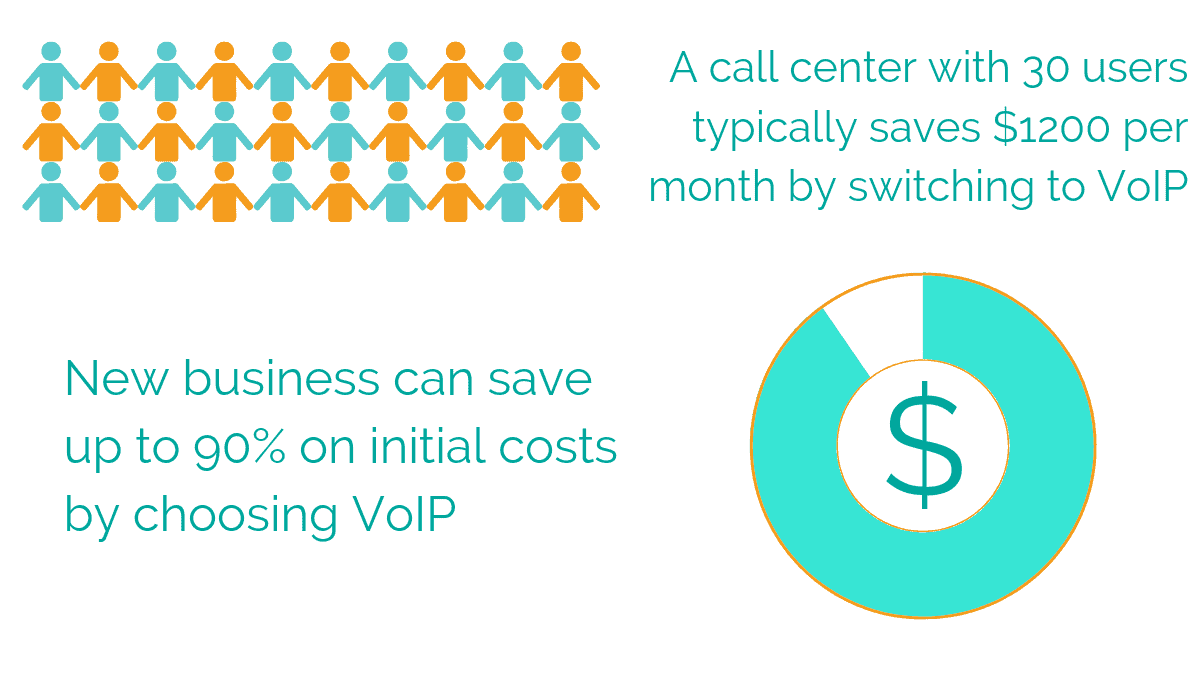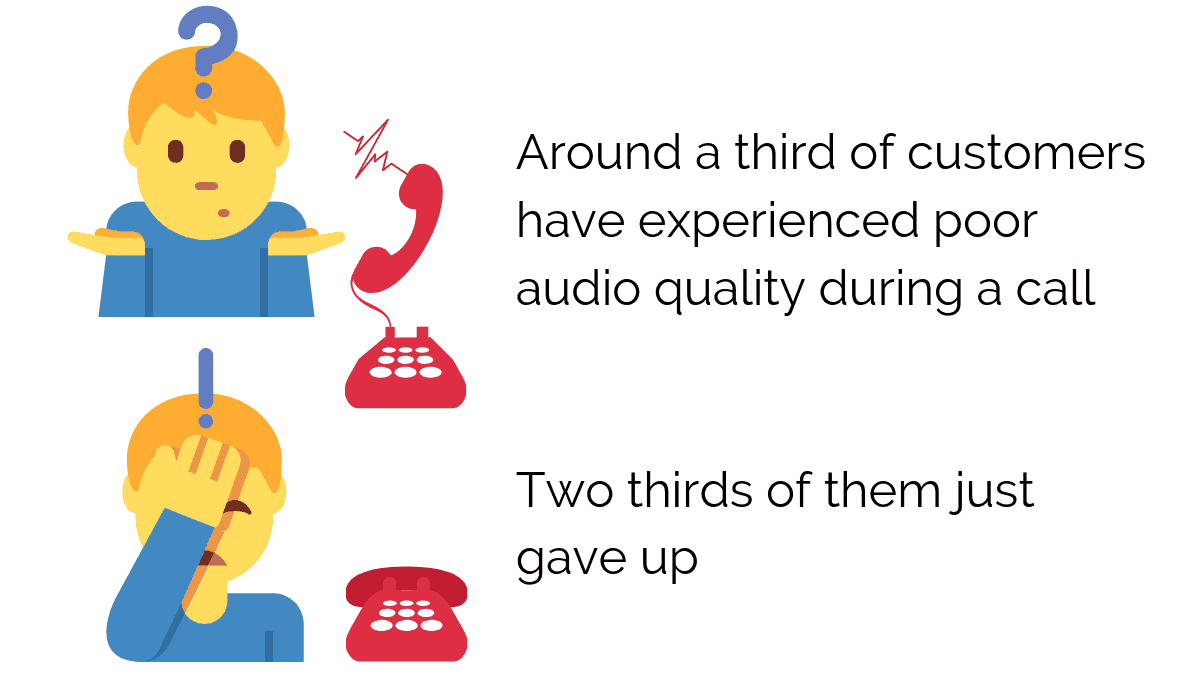So – you’ve taken the plunge and started using VoIP for your calls. Welcome to the hottest new tech of… 2002.
You know that using VoIP will make your service more flexible, and it’ll save you money too.
But somehow you’re not getting the audio quality you were expecting. It’s tempting to blame the hardware – but your office phone systems might not be the problem.
In fact, there are a lot of factors you need to keep in mind.
What’s affecting audio? (Apart from office phone systems)
If you want a full, technical overview of the factors that affect VoIP audio, you can read that here. Today, we’re just going to take a quick (tech-light) refresher.
When call quality is bad, it’s human nature to blame the actual, physical phone systems. It’s human nature to bash your phone or headset on the desk a few times. Resist this impulse.
Instead, remember that your hardware is a tiny part of a huge global network. Any part of that network can create problems for you.
The first 1000 miles
Long before your office phone systems come into play, there are several thousand miles of network to deal with.
There are three ways that this affects your calls:
- Quality and location of app hosting
- Quality and location of media channel hosting
- Quality of telecoms routes
Don’t worry if that doesn’t mean much to you; it’s simpler than it sounds. Let’s take a look.
Quality and location of app hosting
Where is your call center’s brain? Somewhere in the world is a hosted server where thousands of decisions are being made. Those decisions are things like what to do next in IVR, or how to respond to input from a caller.
You want to offer a great service, and that generally means more options – and more sophisticated options – for customers. But as scale and sophistication increase, so does the burden you’re placing on your call center’s brain.
So clearly, it’s important to know where that brain is and whether it’s up to the challenge.
Quality and location of media channel hosting
If application hosting is the call center’s brain, media channel hosting must be its voice. The basic question is the same; where is that voice server hosted? If the voice has to travel a long way across the global network, you’ll get delays and maybe degraded audio.
We won’t dig into RTP or SIP proxies here. It’s enough to say that media channel hosting is one of the biggest contributors to audio quality in this stage. By extension, it’s one of the biggest contributors to your call center’s success.
Quality of telecoms routes
It’s pretty obvious that your telecoms routes affect quality. If you buy phone numbers which are routed through a network that’s distant from your customers… your customer will probably notice. There are two common problems this will cause:
- Latency – the delay between you speaking and them hearing (or vice versa, or both). As you’ll know from every bad Skype call you’ve ever made, even a small delay is hugely distracting.
- Jitters – have your calls ever sounded like they were remixed by the world’s worst DJ? VoIP breaks audio in packets before sending them – the jitters happen when those packets are not delivered correctly.
There’s almost no room for error here. The gap between ‘acceptable latency’ and distracting latency is only 150 milliseconds – half the time it takes to blink.
Optimizing these three things are how you should start to provide the best possible audio. They’re what you need to deal with long before you start worrying about your office phone systems.
But let’s assume you’ve done that – is it time to look at the hardware now?
Not even close.
The last mile
You’ve carried a signal right across the world – you’re not going to let it fall apart in the last mile, are you
That ‘last mile’ is the internet of your actual physical location. We all deal with internet connectivity in our personal lives, so this is pretty easy to get your head around.
However, unlike your home connection, businesses can’t just rely on returning a faulty router off and on again.
The last 100 meters
We’re on the home stretch now. This final 100 meters (yes, we’re switching to metric) is your internal network. Pretty much every business needs to work on their network before it can handle high call volumes with quality and reliability. That’s something we help business do a lot.
The quality you can achieve depends largely on whether you can isolate voice traffic from data. If not, it’s still possible to get very high-quality audio – but it may take some extra work to give audio preferential treatment.
(We have a more in-depth analysis of that topic here.)
So where do we start?
Short answer: not with your office phone systems.
Great hardware is an important part of the call center. But your VoIP audio quality depends on a lot more than that. Replacing the phones because the audio is bad is like replacing the tyres when your car won’t start.
Chances are, the problem goes deeper.
So think of babelforce as car mechanics for your audio. Our multi-carrier platform links up over 300 integrated service providers and offers the highest possible quality and reliability.


